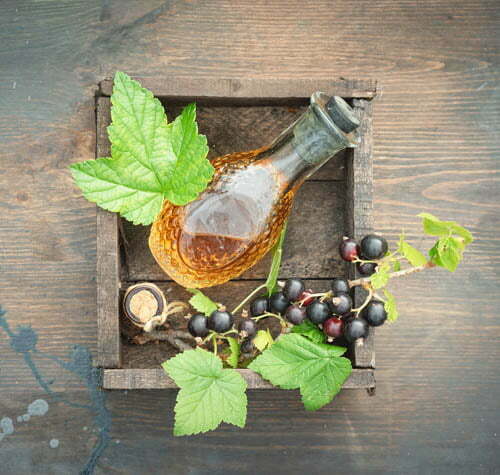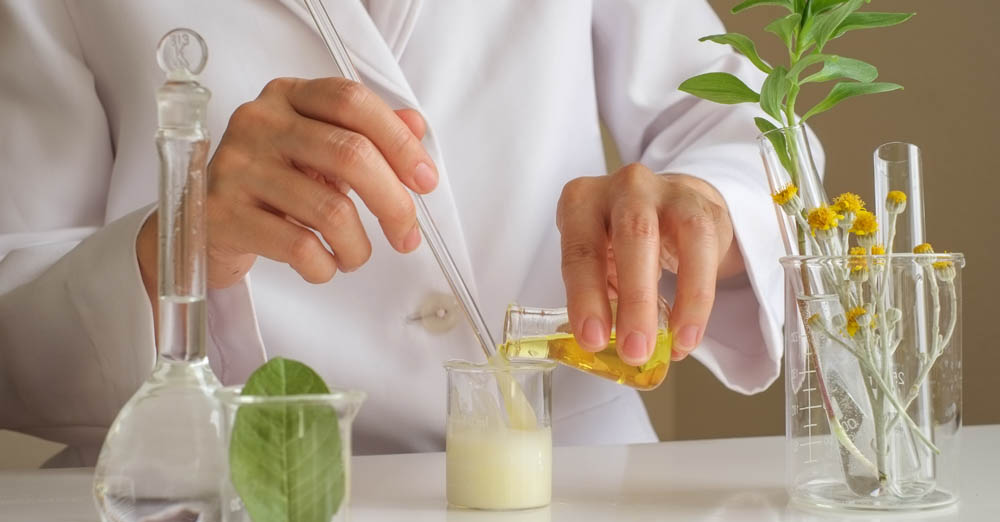Recently updated on: June 2nd, 2023
Preservatives are controversial ingredients of cosmetic products. They are frequently linked with adverse effects on the skin and allergenic reactions. However, a majority of cosmetics are based on water and organic compounds which constitute a conducive environment for growth of bacteria and other microorganisms. Therefore, use of preservatives is necessary to maintain microbiological purity of the product, and hence its safety and stability.
Why are preservatives used in cosmetic products?
Preservatives are substances which block development of microorganisms – primarily bacteria and fungi. They are added to cosmetic products to increase their stability. Preservatives serve two main functions:
- to protect the product against perishing caused by microorganisms and impurities during use; and
- to prevent production of microorganism metabolites which may cause irritation of the skin and mucus membranes.
What preservatives may be used in cosmetic products?
Although there are a multitude of substances with preservative properties, their use in cosmetic products is strictly regulated and restricted only to the compounds whose safety and effectiveness is fully proven.
Preservatives allowed for use in cosmetic products are stipulated in annex V of Regulation (EC) No 1223/2009 of the European Parliament and of the Council. The annex lists over 50 substances and defines restrictions on their application, i.e. permissible concentrations, types of products they may be added to, as well as additional warnings.
The most popular preservatives
At present, the most frequently used preservatives include parabens, i.e. esters of p-Hydroxybenzoic acid (PHBA). These are compounds occurring naturally in certain fruits and used as preservatives not only in cosmetic products, but also in the food stuffs and pharmaceutical industries. Although highly controversial, parabens belong to the best safety-tested preservative groups, and are considered safe ingredients for use not only in cosmetic products, but in food as well. The maximum allowed concentration is 0.4% for a single compound and 0.8% for a combination of different parabens.
Triclosan is a popular agent with not only preserving but also antimicrobial properties. Given its bacteriostatic and anti-fungal qualities, it is used as an anti-bacterial ingredient as well as preservative primarily in the so-called anti-bacterial products (soaps and gels), toothpastes, foot care products, as well as liquid deodorants. Its maximum concentration 0.3%.
Shampoos and emulsions frequently contain isothiazolinone compounds, i.e. a mixture of 5-chloro-2-methylo-4-isothiazolin-3-one (MCI/MI) in the proportion of 3:1. However, despite their high effectiveness, the allowed concentration is only 0.0015%, due to a high percentage of allergic reactions.
Organometallic salts, including mercury compounds, are another important group of preservatives. They include phenylmercuric salts and thiomersal, allowed in eye care products (primarily eye make-up and make-up removal products), in the maximum concentration of 0.007% measured as mercury. As a preservative, thiomersal is highly controversial as an additive to certain vaccines – the compound is associated with the alleged (and multiple times disproved) claim of its links to autism in children.
“Contains no preservatives” – true or false?
An interesting recent phenomenon is more and more cosmetic products labelled as containing “no preservatives”. It refers primarily to plant-based cosmetics. However, such designation does not really mean that the product is in no way protected against microorganism development.
Natural preservatives in cosmetic products
In such a case, the role of a preservative substance is usually ensured by natural compounds with evidenced anti-microbial action, and indirectly – preserving properties. These include primarily essential oils, plant extracts and alcoholic extracts. Examples are tea tree oil, rosemary oil or extract, eucalyptus oil, or marigold, green tea leaves or many other plant extracts.

Plant extracts
We offer a carefully selected range of plant extracts, primarily including powder extracts, water-based, oil-based, alcohol-based, and glycerin-based extracts. Our products are ideal for the pharmaceutical, medical, cosmetic, and food industries. The abundance of natural active ingredients in these extracts makes them suitable for use in many products.
Additionally, our offer includes CO2 extracts obtained through high-pressure extraction with natural carbon dioxide in a supercritical state. These extracts, derived from herbs, spices, and other plants, are excellent bioactive ingredients, aromas, and fragrances. Their highly concentrated form perfectly enhances dietary supplements, cosmetics, perfumes, food products, and beverages.
All our extracts have halal certificates and kosher certification, confirming their highest quality and compliance with religious requirements.
Some product categories do not require preservatives due to their high alcohol contents (e.g. perfumes, hair sprays) or form.
Preservatives are necessary in single use products, some waterless cosmetics, as well as air-tightly packed products which come in no direct contact with the skin and air (e.g. aerosols).
Bibliography:
- https://www.kosmopedia.org/bezpieczenstwo/czarna-lista-skladnikow-kosmetycznych/kosmetyki-i-konserwanty/
- https://laborant.pl/srodki-konserwujace-w-kosmetykach-koniecznosc-czy-zbedny-balast
- Natywa M, Górska A. Stosowanie konserwantów w kosmetykach – za i przeciw. Kosmetologia Estetyczna (2015); 4(2): 133-137.
- Bojarowicz H, Fronczak P, Krysiński J. Czy kosmetyki mogą nie zawierać konserwantów? Hygiea Public Health (2018); 53(2): 124-131.
- Rozporządzenie Parlamentu Europejskiego i Rady (WE) Nr 1223/2009 z dnia 30 listopada 2009 r. dotyczące produktów kosmetycznych


